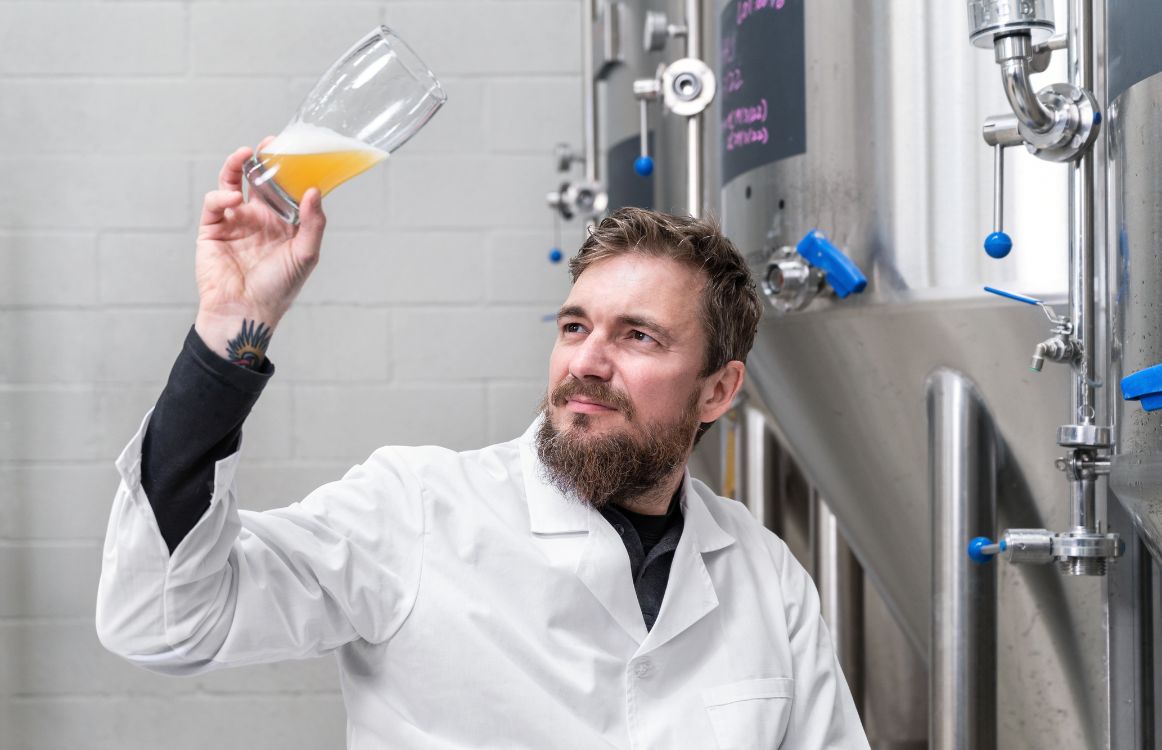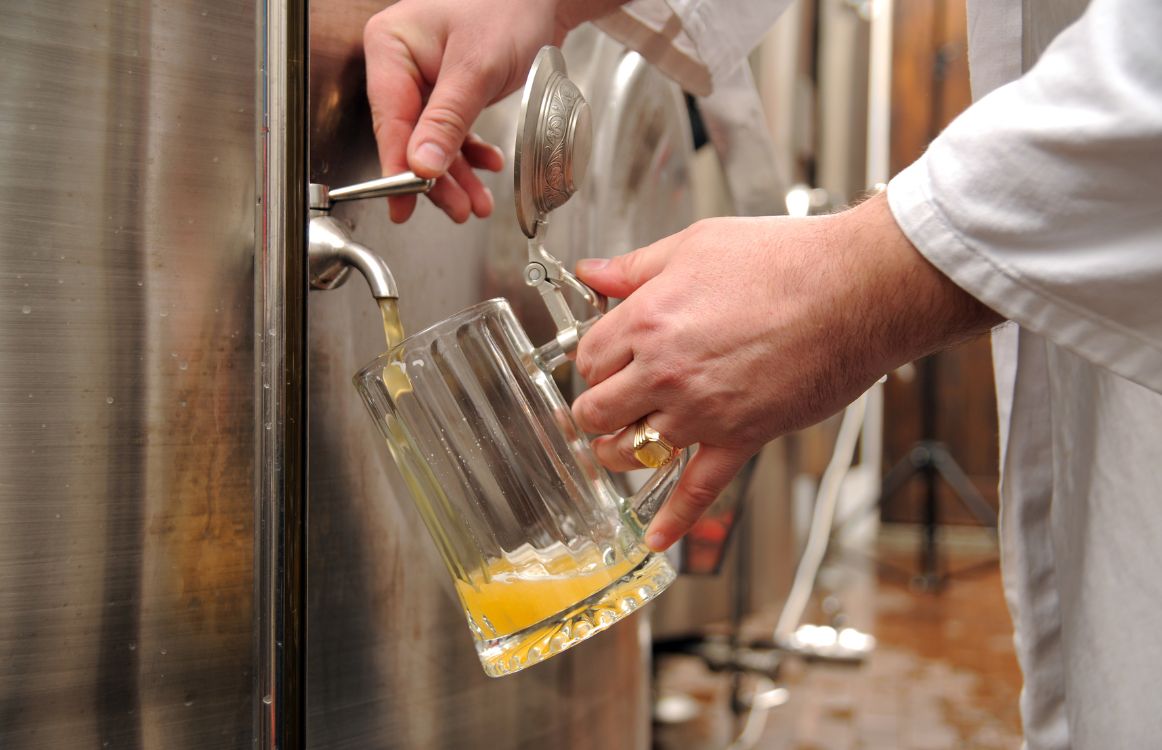Removing Esters from Beer: All You Need to Know

When it comes to removing esters from beer, the conversation can quickly get into murky territory. You see, it is not possible to simply remove esters from a beer that has been produced. If your beer smells like baby vomit, you just have to dump the beer and move on. However, there are many approaches you can take to controlling the esters in your beer, even once you have completed primary fermentation.
Yeast and Brewing
The first and most critical aspect of the brewing process to understand for any brewer or true beer lover is the relationship between yeast and brewing.
The brewer has a lot of control over the early stages of brewing. You can select your grain and then decide how much you want the grain toasted, if at all. You get to decide how fine a grind you want on your grain so that your wort can grow rich with nutrients and fermentable sugars.
Then, you get to choose how hot your boil will be and for how long you will steep the grain, soaking all that goodness into the wort.
You will select which hops and how many to include in your brew, and you will also figure out when to add your hops, either before or after the boil.
All of these factors are entirely up to the brewer and always have been.
But up until recently, the brewer had no say in which yeast went into the beer.
We simply had to create the ideal circumstances for brewing – steep the chosen grain in water, add the hops, strain the liquid out – and then wait.
Whichever wild, local yeasts were available and amenable to the ingredients and the temperature would then settle in and get to the important and quite fascinating natural work of fermenting.
Esters in Beer
It is this natural process of fermentation driven by the yeast that produces what we now know as esters. Typically, we say that during fermentation, yeast cells consume sugar and produce alcohol and carbon dioxide. Period. We stop there.
Sometimes, we go a bit further to say, “and hundreds of other secondary metabolites.”
Well, one of those secondary metabolites happens to be esters.
What actually happens during fermentation is that yeast go in search of sugar as an energy source. Once consumed, the yeast undergo a chemical process wherein they convert those sugars into alcohol, carbon dioxide, and other metabolites as waste products.
It is a chemical transformation.
There exists a wide range of esters produced by yeast, including diacetyl, isoamyl acetate, and butyric acid. You can smell the esters produced during fermentation, and you can taste them afterward.
The most common aromas and flavors that come from esters are pear, banana, anise, rose, and bubblegum. In small and even moderate quantities, these esters can highlight flavors and really be the selling point for a beer.
On the downside, some esters can be overwhelming and present as baby vomit, buttered popcorn, and garbage. All things you want either to minimize or avoid altogether.
The reality is that all beer will have esters to some degree. So, while you cannot remove esters from beer because they will always be produced by yeast, there are a few steps you can take to manage the esters in your beer before, during, and even after fermentation.
Choose a Yeast Strain
The first thing to pay attention to when it comes to esters is the strain of yeast you choose. The description of yeast provided by any brand will let you know what to expect in terms of esters and the strength of those esters. A great example is the difference between a German Pilsner and a Bavarian Witbier. The pilsner yeast is extremely low in esters while the witbier is heavy on the banana flavors. Indeed, it is what the witbier is known for!
You can select American lagers, which are also low in esters, and aim for milder flavors that you expect to pair well with the style of beer you are brewing.
Control the Temperature

The next thing to think about in terms of ester production is the temperature. Higher fermentation temperatures will bring out the esters in the yeast while cooler temps will keep the esters under wraps. For this reason, lagers, which are fermented and stored at colder temperatures are thought of as clean and crisp. In fact, when lagers heat up, they are off-putting precisely because all of those unwanted flavors come to the surface.
In contrast, ales are fermented specifically to be heavier and more flavor forward, so the esters really shine. A British ale, for example, will be rich in fruity notes, and is often served at a slightly warmer temperature than even an American IPA. Note that British ale yeasts are likely to have more esters and stronger flavors than American ale yeasts.
Krausening
Finally, many brewers confuse what is happening during fermentation with the final result. Often, you will smell off-putting aromas while the yeast is still working its magic, but once fermentation is complete, those smells are gone, and they certainly have not translated to flavor.
If, once primary fermentation is complete, you still find unwanted off-flavors as a result of the esters, you can do one of two things.
If the flavor is not especially strong but still unwanted, you can rack the beer and allow it to undergo secondary fermentation. This process will allow the remaining yeast cells to reactivate and get to work “mopping up” remaining off-flavors.
If the flavor is on the stronger side, you can always add a bit more yeast during secondary fermentation and encourage another round of krausening, during which you will have more yeast actively cleaning up those esters.
You only really have a problem when the esters have produced an overwhelming off-flavor that you just cannot get around.
Fortunately, if you follow the steps outlined here, you should not run into this problem.
Cheers!
Are you still pitching fresh yeast every time? By reusing your yeast, you can save up to hundreds of thousands of dollars per year on just yeast alone!
Join the hundreds of brewers from all around the world using the Smartest Automated Yeast Cell Counter! Request a Free Demo Account today and experience firsthand how Oculyze can take your brewery to the next level!
Sources:
- https://beerandbrewing.com/off-flavor-of-the-week-estery/
- https://beersmith.com/blog/2012/03/07/esters-in-beer-brewing/
Stay on top on important fermentation insights – subscribe to our monthly newsletter and receive a hand-picked selection of our most relevant articles straight to your inbox.
Never miss a beat and get real time updates with a new article each workday by subscribing our social media channels.
Instagram | Facebook | Twitter | YouTube


